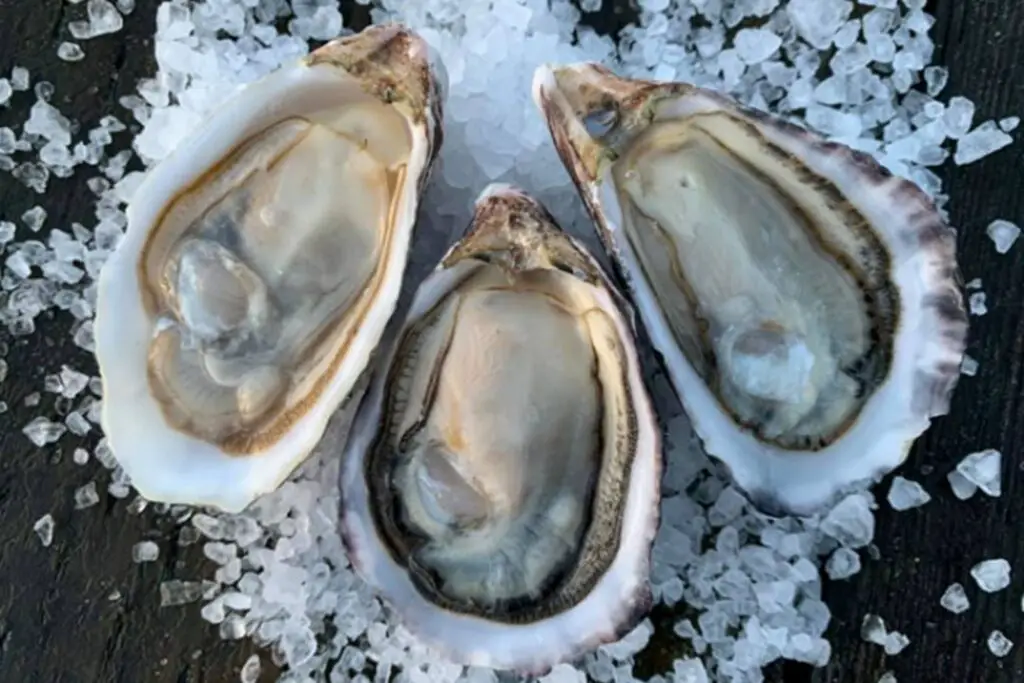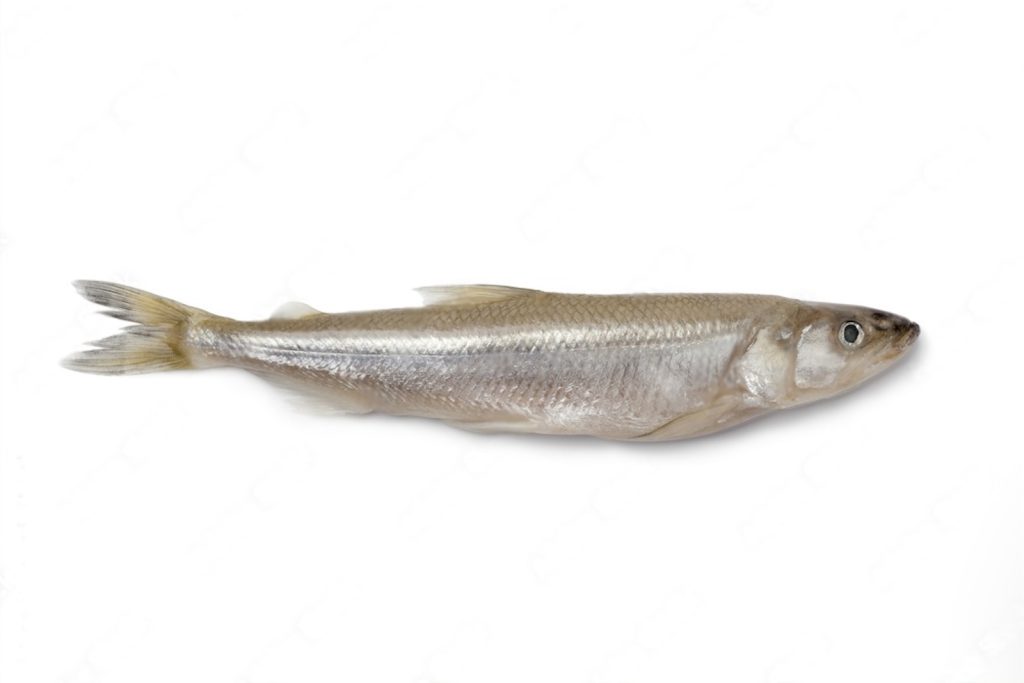
Halibut is a popular fish known for its delicate flavor and firm, flaky texture. It is widely used in various seafood dishes and is a favorite among many seafood enthusiasts. Freezing halibut allows you to preserve its freshness and enjoy it at a later time. Whether you caught the fish yourself or purchased it from a market, freezing halibut properly can help maintain its quality and taste. In this article, we will provide you with a step-by-step guide on how to freeze halibut to ensure its optimal texture and flavor when you’re ready to cook it.
Follow these steps to freeze halibut:
Step 1: Choose fresh halibut
When it comes to freezing halibut, starting with fresh fish is crucial to ensure the best possible results. Freshness plays a significant role in preserving the flavor, texture, and overall quality of the halibut during the freezing process. Here’s why choosing fresh halibut is important:
- Optimal flavor: Fresh halibut has a mild, ocean-like smell that is characteristic of its freshness. This aroma indicates that the fish is in good condition and hasn’t started to spoil. By selecting halibut with a pleasant smell, you can be confident that its natural flavors will be preserved after freezing.
- Firm texture: Fresh halibut fillets or steaks should feel firm and have a resilient texture when touched. When you press the fish lightly with your finger, it should bounce back rather than leaving an indentation. The firmness of the fish is an indicator of its freshness and ensures a satisfying texture when cooked, even after freezing.
- Visual cues: Examine the halibut closely for any signs of discoloration. Fresh halibut should have a vibrant, translucent appearance with a slightly glossy surface. If you notice any browning, dark spots, or dullness, it could be a sign of deterioration. Avoid purchasing halibut that looks discolored, as it may not freeze well or retain its optimal taste and texture.
- Unpleasant odor: A strong, unpleasant odor is a clear indication of halibut that is past its prime. Fresh halibut should have a subtle and clean aroma, reminiscent of the sea. If you detect any overpowering fishy or ammonia-like smells, it suggests that the fish is not fresh and may have started to spoil. It’s best to avoid such halibut for freezing.
Is it necessary to remove the skin before freezing halibut?
Removing the skin before freezing halibut is not necessary but is a matter of personal preference. The skin helps protect the fish during freezing and can be easily removed before or after thawing. However, if you prefer to freeze skinless halibut or plan to use the skin separately, you can remove it before freezing by carefully filleting or skinning the fish.
Step 2: Clean and prepare the halibut
Cleaning and preparing the halibut before freezing is a critical step to maintain its quality and ensure optimal results. Here’s why it’s important to clean and prepare the halibut properly:
- Remove dirt and debris: Halibut, like any fish, can accumulate dirt, scales, and other impurities during handling and processing. Rinsing the fish under cold water helps to remove any surface contaminants, ensuring that you freeze a clean product. This step also helps improve the overall taste and appearance of the halibut when it is eventually cooked.
- Prevent bacterial growth: Properly cleaning the halibut reduces the presence of bacteria and microorganisms that may be present on the surface of the fish. By rinsing the fish, you minimize the risk of bacterial growth during freezing, which can lead to spoilage and negatively impact the quality of the halibut.
- Excess moisture removal: Patting the halibut dry with paper towels is essential to remove excess moisture from the surface of the fish. Excess moisture can contribute to the formation of ice crystals when the halibut is frozen. These ice crystals can damage the delicate texture of the fish and result in a loss of quality. Drying the halibut helps to minimize this potential issue.
- Improved freezing process: By cleaning and drying the halibut, you create a favorable environment for freezing. Removing excess moisture reduces the formation of ice crystals, which can lead to freezer burn and negatively affect the texture and flavor of the fish. Proper preparation allows the halibut to freeze more evenly and maintain its quality for an extended period.
Can I freeze fresh halibut directly without any preparation?
While it is technically possible to freeze fresh halibut without any preparation, it is generally recommended to take a few steps to maintain its quality. It is best to rinse the halibut under cold water, pat it dry with paper towels, and then wrap it tightly in plastic wrap or place it in an airtight freezer bag to prevent freezer burn. This extra step helps preserve the flavor, texture, and overall quality of the halibut during its time in the freezer.
Should I season or marinate halibut before freezing?
It is generally not recommended to season or marinate halibut before freezing. Seasonings and marinades can alter the texture and taste of the fish during the freezing process. It is best to freeze halibut in its natural state and add seasonings or marinades after thawing, just before cooking, to ensure optimal flavor and texture.
Step 3: Portion the halibut
Portioning the halibut before freezing is a practical step that offers several benefits. By dividing the fish into serving sizes, you can enhance convenience, reduce waste, and ensure more efficient thawing and cooking. Here’s why it’s beneficial to portion the halibut before freezing:
- Easy meal planning: Portioning the halibut into individual serving sizes allows for easy meal planning. You can freeze the fish in quantities that align with your typical meal requirements. This way, when you’re ready to cook, you can defrost and use only the amount of halibut needed for a particular meal, without having to thaw the entire piece.
- Minimize waste: Freezing the halibut in portion sizes helps minimize waste. Instead of freezing a large piece of halibut that may not be consumed entirely in one meal, portioning allows you to freeze only what you need. This reduces the likelihood of leftover halibut going to waste and ensures that each portion is utilized efficiently.
- Faster and even thawing: Smaller portions of halibut thaw more quickly and evenly compared to larger pieces. Thawing time can vary depending on the thickness of the fish. By portioning the halibut into individual servings, you can expedite the thawing process, making it more convenient when you’re preparing a meal.
- Enhanced cooking flexibility: Portioned halibut provides greater flexibility in cooking methods. Whether you prefer grilling, baking, pan-searing, or any other cooking technique, having individual serving sizes allows you to choose the method that suits your preference and cooking equipment. It also ensures that the halibut cooks evenly and consistently.
- Reduced freezer burn risk: Smaller portions of halibut freeze and retain quality more effectively than larger pieces. By dividing the fish into individual portions, you minimize the surface area exposed to air in the freezer. This reduces the risk of freezer burn, which can negatively impact the texture and flavor of the fish.
Step 4: Wrap the halibut
Wrapping the halibut portions tightly before freezing is crucial to protect the fish from freezer burn and prevent moisture loss. Proper packaging ensures that the halibut maintains its quality, texture, and flavor during freezing. Here’s why wrapping each portion tightly is important:
- Prevent freezer burn: Freezer burn occurs when moisture evaporates from the surface of the fish, leaving it dehydrated and vulnerable to oxidation. Wrapping the halibut tightly in plastic wrap or aluminum foil creates a barrier that helps prevent air exposure, which is the primary cause of freezer burn. By eliminating contact with air, you reduce the risk of freezer burn and preserve the overall quality of the halibut.
- Maintain moisture content: Halibut contains natural moisture, and proper wrapping helps retain this moisture during freezing. Moisture loss can lead to the formation of ice crystals and result in a dry and less flavorful fish. By wrapping each portion tightly, you create a seal that minimizes moisture evaporation, helping the halibut retain its natural juiciness and tenderness.
- Protect against odors: Halibut can absorb odors from other foods in the freezer if not adequately protected. Tightly wrapping each portion prevents cross-contamination and ensures that the halibut retains its own distinct flavors. This is particularly important if you have strong-smelling foods stored in the freezer.
- Options for wrapping: Plastic wrap or aluminum foil are commonly used for wrapping halibut portions. Ensure that you wrap the fish tightly, pressing the wrap or foil directly against the surface of the halibut to eliminate any air pockets. This tight seal helps maintain the fish’s integrity and prevents air exposure. Another option is to use vacuum-sealed bags, which remove all the air and provide an airtight seal, further protecting the halibut from freezer burn and maintaining its quality.
Step 5: Place the wrapped portions in a freezer-safe container
After wrapping each halibut portion tightly, the next step is to place them in a suitable freezer-safe container. This additional layer of protection helps maintain the quality of the fish during freezing and offers several advantages. Here’s why it’s important to use a freezer-safe container:
- Prevent freezer burn: Freezer-safe containers provide an extra barrier against air exposure, reducing the risk of freezer burn. Even though the halibut portions are already wrapped, placing them in a container adds another level of protection, ensuring that no air or moisture can reach the fish. This helps maintain the texture, flavor, and overall quality of the halibut during long-term storage.
- Organize and optimize space: Using a freezer-safe container allows you to organize the halibut portions efficiently in your freezer. Containers help keep the portions separate and prevent them from sticking together during freezing. It also makes it easier to stack and store the portions, maximizing the available freezer space.
- Enhanced protection from freezer odors: Freezer-safe containers provide an additional safeguard against potential odors from other foods in the freezer. This is especially important if you have strongly flavored or aromatic items stored nearby. The container acts as a barrier, minimizing the risk of the halibut absorbing unwanted odors and preserving its distinct flavor.
- Sturdy and durable storage: Freezer-safe containers are specifically designed to withstand low temperatures and long-term storage in the freezer. They are made from materials that are resistant to cracking, breaking, or becoming brittle in freezing conditions. Using containers that are labeled as freezer-safe ensures that they can withstand the rigors of freezer storage without compromising the quality of the halibut.
Alternatively, you can use freezer bags designed for long-term storage. When using freezer bags, ensure you squeeze out any excess air before sealing them tightly. Removing as much air as possible helps minimize the potential for freezer burn and preserves the freshness of the halibut.
Can I freeze halibut in a glass container?
While it is possible to freeze halibut in a glass container, it is important to exercise caution. Glass containers can be prone to cracking or breaking due to the expansion of liquids during freezing. To mitigate this risk, choose freezer-safe glass containers specifically designed for freezing, leave enough headspace to accommodate expansion, and allow the halibut to cool before placing it in the freezer. Alternatively, you can transfer the halibut to a freezer-safe plastic bag or wrap it in plastic wrap before placing it in a glass container for added protection.
Step 6: Label and date the packages
Labeling and dating the packages of frozen halibut is a simple but important step in ensuring food safety and maintaining the quality of the fish. Here’s why it’s crucial to label each package:
- Tracking storage time: By labeling the packages with the date of freezing, you can easily track how long the halibut has been stored in the freezer. It’s important to consume frozen fish within a recommended time frame to maintain its optimal quality and safety. Labeling allows you to keep track of the storage duration and helps you prioritize the use of older packages before newer ones.
- Avoiding food waste: Proper labeling helps prevent food waste by ensuring that the frozen halibut is used before it exceeds its recommended storage time. By knowing the freezing date, you can plan your meals accordingly and avoid unnecessarily discarding halibut that has been stored for too long. This practice promotes efficient utilization of your frozen food inventory.
- Maintaining quality: Over time, frozen foods can experience changes in texture, flavor, and nutritional value. By labeling the packages, you can monitor the storage duration and ensure that you consume the halibut while it is still at its best quality. This practice helps you enjoy the full flavor and texture of the fish when you eventually prepare and cook it.
- Clear identification: Labeling the packages with the contents (halibut) provides clear identification and eliminates any confusion in the freezer. This makes it easier to locate and select the desired packages without having to open each one. Clear labeling helps maintain organization and efficiency in your freezer storage.
To label the packages, use a permanent marker and write the essential information directly on the packaging. Indicate the contents (halibut) and the date of freezing. It’s also helpful to include any additional details you find necessary, such as the portion size or any specific notes about the fish (e.g., skin-on or boneless).
Step 7: Freeze the halibut
Freezing the halibut properly is essential to maintain its quality, texture, and flavor over an extended period. Here’s why it’s important to follow the correct freezing procedures:
- Preserve freshness: Freezing halibut at a temperature of 0°F (-18°C) or below helps preserve its freshness. The low temperature inhibits the growth of microorganisms that can cause spoilage, ensuring that the fish remains safe to consume for a longer time. It also helps maintain the natural flavor and texture of the halibut.
- Quick freezing: Halibut should freeze as quickly as possible to minimize the formation of large ice crystals. Rapid freezing helps preserve the integrity of the fish by preventing damage to its cellular structure. When frozen quickly, the halibut retains its moisture content and overall quality, resulting in better texture and taste upon thawing and cooking.
- Proper air circulation: Overcrowding the freezer can impede proper air circulation, leading to uneven freezing and potential quality issues. It’s important to leave enough space around the container with the halibut portions to allow for adequate airflow. Good air circulation helps maintain a consistent freezing temperature and ensures that the halibut freezes uniformly.
- Freezer management: Avoiding overcrowding in the freezer not only facilitates proper air circulation but also allows for efficient freezer management. By leaving enough space, you can organize and locate the halibut portions more easily. It also prevents the halibut packages from being crushed or damaged by other items in the freezer.
How long can frozen halibut stay good in the freezer?
Frozen halibut can stay good in the freezer for up to 6 to 12 months if stored properly. It is important to wrap the halibut tightly in plastic wrap or place it in an airtight container to prevent freezer burn and maintain its quality. Freezer burn can affect the texture and taste of the halibut over time. It’s advisable to label the packaging with the date of freezing to keep track of its storage duration and prioritize using the oldest frozen halibut first.
Step 8: Thaw and cook frozen halibut
Thawing frozen halibut properly is crucial to ensure food safety and preserve the quality of the fish. Here are the recommended methods for thawing frozen halibut:
- Refrigerator thawing: The safest method for thawing frozen halibut is to transfer the wrapped portions from the freezer to the refrigerator. Place the portions on a plate or a shallow dish to catch any potential drips. Allow the halibut to thaw slowly in the refrigerator overnight or for approximately 24 hours. Thawing in the refrigerator at a controlled temperature helps maintain the quality and texture of the fish while minimizing the risk of bacterial growth.
- Microwave defrosting: If you’re short on time, you can use the defrost function on your microwave to thaw the halibut. Follow the manufacturer’s instructions for defrosting fish or use the appropriate setting based on the weight of the halibut portions. Be cautious not to overheat or partially cook the fish during the defrosting process. Once thawed, it’s important to cook the halibut immediately to ensure food safety.
- Cold water thawing: Another quick method to thaw frozen halibut is to place the tightly wrapped portions in a leak-proof plastic bag and submerge them in cold water. Ensure that the bag is securely sealed to prevent water from entering and compromising the fish. Change the water every 30 minutes to maintain a cold temperature. Thawing under cold running water is also an option, but it requires constant water flow and supervision. Once thawed, cook the halibut promptly.
- Regardless of the thawing method you choose, it’s important to cook the halibut immediately after thawing to ensure food safety. Avoid refreezing previously thawed fish, as this can affect the texture and quality of the halibut.
Proper thawing ensures that the halibut is safe to consume and maintains its flavor and texture. Whether you opt for refrigerator thawing for gradual and controlled thawing, microwave defrosting for quicker results, or cold water thawing for time efficiency, it’s essential to follow safe food handling practices and cook the halibut promptly after thawing.
Other related questions
Can I refreeze previously thawed halibut?
It is generally not recommended to refreeze previously thawed halibut. When you thaw halibut, the process initiates the growth of bacteria, and refreezing can allow those bacteria to multiply further. This can affect the safety and quality of the fish. It is best to plan your portions in advance and only thaw the amount of halibut you intend to use to avoid the need for refreezing. If you have already cooked the halibut, you can freeze the cooked leftovers once, but subsequent thawing and refreezing should be avoided to maintain optimal taste and texture.
How do I know if my frozen halibut has gone bad?
To determine if your frozen halibut has gone bad, there are a few signs to look out for. Firstly, check for any noticeable changes in appearance, such as discoloration or an unusual texture. If the fish appears slimy or has a strong, off-putting odor, it may have spoiled. Additionally, if you notice ice crystals or freezer burn on the surface of the halibut, it could indicate deterioration. Trust your senses, and if in doubt, it’s best to err on the side of caution and discard the fish to avoid any potential health risks.
Can I use frozen halibut with the fresh ones?
Yes, you can use frozen halibut alongside fresh ones in certain recipes. However, it’s important to consider the differences in texture and moisture content between fresh and frozen halibut. Thawed frozen halibut tends to be slightly softer and may release more moisture during cooking. This can impact the overall texture and flavor of the dish. If you decide to combine fresh and frozen halibut, it’s advisable to adjust cooking times and methods accordingly to ensure even cooking and maintain the desired texture.
Can I freeze halibut fillets and steaks together?
Yes, you can freeze halibut fillets and steaks together if desired. However, it’s important to keep in mind that the thickness and size of the fillets and steaks may vary, so they might require different cooking times when thawed and prepared. To ensure even freezing and easier portioning, you may choose to separate the fillets and steaks by wrapping them individually or placing parchment paper between them before freezing.
Can I freeze halibut that has been breaded or coated?
Yes, you can freeze halibut that has been breaded or coated, but there are a few considerations to keep in mind. Breaded or coated halibut may have a slightly different texture after freezing and thawing compared to fresh. To minimize potential texture changes, it’s best to freeze breaded or coated halibut individually on a baking sheet before transferring them to an airtight container or freezer bag. This method helps maintain the coating integrity and prevents them from sticking together during freezing.








